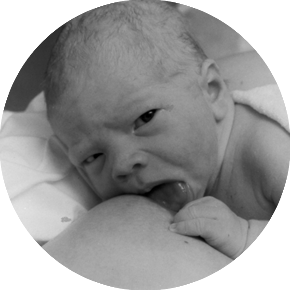Postpartum maternal oxytocin release by newborns: effects of infant hand massage and sucking.

Abstract
 BACKGROUND:
BACKGROUND:
Newborns placed skin-to-skin with their mothers show an inborn sequence of behavior similar to that seen in other mammals. The purpose of this study was to make a detailed exploration of hand movements and sucking behavior in healthy term newborns who were placed skin-to-skin on their mothers' chests, and to study maternal oxytocin release in relation to these behaviors.
METHODS:
Ten vaginally delivered infants whose mothers had not been exposed to maternal analgesia were video-recorded from birth until the first breastfeeding. Video protocols were developed based on observations of the videotapes. Each infant's hand, finger, mouth, and tongue movements, positions of the hand and body, and sucking behavior were assessed every 30 seconds. Maternal blood samples were collected every 15 minutes, and oxytocin levels were analyzed by radioimmunoassay. A statistical test for establishing the relationship between maternal oxytocin levels and infants' hand movements or sucking behavior was developed.
RESULTS:
Infants used their hands to explore and stimulate their mother's breast in preparation for the first breastfeeding. A coordinated pattern of infant hand and sucking movements was also identified. When the infants were sucking, the massagelike hand movements stopped and started again when the infants made a sucking pause. Periods of increased massagelike hand movements or sucking of the mother's breast were followed by an increase in maternal oxytocin levels (p < 0.005).
CONCLUSIONS:
The findings indicate that the newborns use their hands as well as their mouths to stimulate maternal oxytocin release after birth, which may have significance for uterine contraction, milk ejection, and mother-infant interaction.

